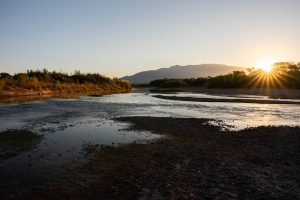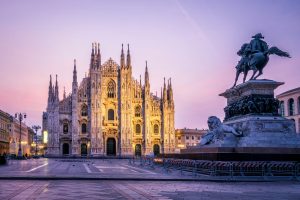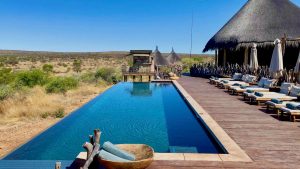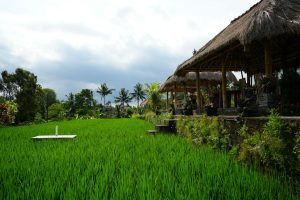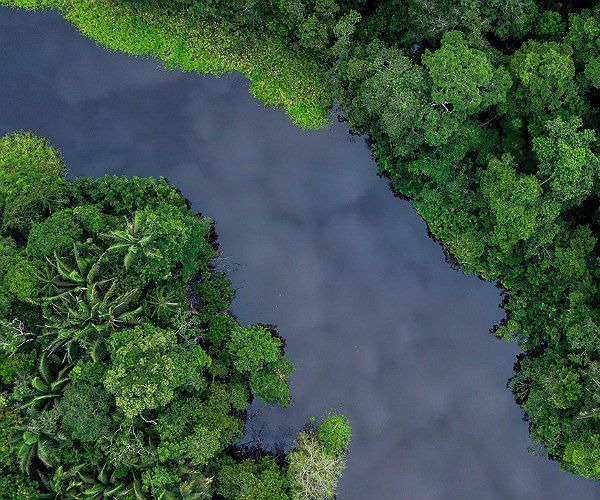
There are many different groups of indigenous people who live within the green walls of the Amazon rainforest, which spans nine countries in South America. These self-sufficient communities, each with their own individual language and culture, have called the rainforest home for millennia and have done so by living within their means thanks to the bounty of the forest.
Though their worldviews and cosmovisions may vary, there is a common practice of only harvesting enough food necessary for survival and never excessive amounts of any one species. This ancient ethical principle has ensured the continued health of the forest’s multiplicity of creatures by maintaining the balance necessary to provide for all of Mother Earth’s children.

This is vastly different from the consumer culture that plagues our modern world. The need to feed ever-expanding populations of humans across the globe bred the mechanization of agriculture in the 20th century. Technological advancements brought many changes in how farmers planted, watered, and harvested monoculture crops in the name of so-called progress and efficiency as the capacity for more food production grew. However, clear-cutting deforestation and the agricultural practice of fire-fallow cultivation has persisted as a proven method to clear land for agriculture at the expense of Nature. Farmers in countries like Brazil widely use the slash-and-burn method to raze vast swaths of the forest. Despite the fact that the resulting swidden fields are only productive for 3-5 years before they become devoid of nutrients and incapable of supporting new growth for crops or cattle ranching, deforestation persists. Another 5-20 years is necessary for the land itself to recover… if ever. Assuming the topsoil doesn’t fall prey to erosion, of course.

Already an estimated 20{fd1018b708dc11e6d771fa6d5ce8eacdee7a6add7c2315f27e48bc4e47591114} of the Amazon has been permanently destroyed over the past 40 years. Continual deforestation has led to abnormally dry regional conditions that create a dangerous tinderbox for wildfires in addition to those started by humankind. 2019 alone saw a massive increase of more than double the number of fires raging the year before, and the Amazon continues to be under siege every minute of every day. Reports that more than one football pitch worth of forest is destroyed per minute has people reeling in horror and shock at the destruction of ecosystems and displacement of wildlife. The world is ablaze with outrage at the damage inflicted on the lungs of the earth, which provides at least 20{fd1018b708dc11e6d771fa6d5ce8eacdee7a6add7c2315f27e48bc4e47591114} of the planet’s oxygen, and people are desperately searching for ways to help conservation efforts in order to mitigate this plight.

The lives and livelihoods of indigenous people who have lived in the Amazon for generations as guardians who protect this fragile zone are in jeopardy. Because of their intimate connection with the forest, they are the people best suited to continue as its guardians, but they need your help. One of the best ways the rest of the world can help protect our largest rainforest is perhaps counterintuitive at first glance. Rather than being ultimately left alone, the Amazon needs responsible and sustainable tourism to become the primary source of economic development so that agriculture and extractive-based sectors are phased out of the region. Communities like the Kichwa Anangu have flourished by making community-led ecotourism their only industry, and are able to safeguard the forest and their way of life as a result. Their success can be used as an exemplar for other communities who decide to take this route in order to protect everything they hold dear.

Regenerating the old-growth forest is truly impossible. Once gone, it’s gone forever. That is why we must all take action immediately. One person can genuinely make a difference in this scenario because everyone who contributes money to conservation and sustainable ecotourism in the Amazon highlights the importance of this natural wonder and helps bolster the people dedicated to its defence. This will add up one by one to effect a wave of positive change. So if you’re searching for a destination to visit, look no further than the jungles of the nine nations of Brazil, Bolivia, Columbia, Ecuador, French Guiana, Guyana, Peru, Suriname, or Venezuela. Make memories to last a lifetime and become an integral part of protecting the planet in perpetuity.
Miguel Andy is General Manager of Napo Wildlife Center. Napo Wildlife Center is an eco-lodge offering unforgettable experiences in the Amazon rainforest of Ecuador, inside Yasuni Biosphere Reserve, which is managed by the Añangu kichwa aboriginal community.
If you would like to be a guest blogger on A Luxury Travel Blog in order to raise your profile, please contact us.
